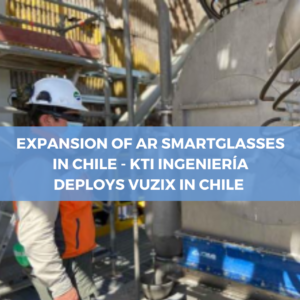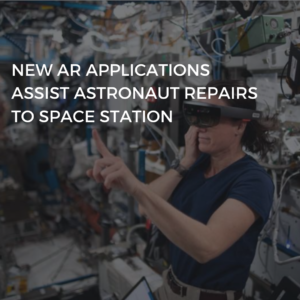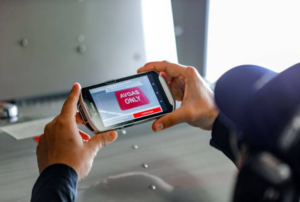Utilities can invest a million dollars and more to train an individual operator, over 18 months and more. The goal is exceptional competence and procedural adherence, and a solid knowledge of plant design and theory. But even with the best training, there is no replacement for operators with hands-on experience, who possess a level of knowledge unobtainable in a classroom or training programme. Utilities need put this invaluable knowledge to work.
Simultaneously, energy companies need to upskill frontline veterans. Additional skillsets are frequently at technology’s cutting-edge and it is essential to provide ongoing and regular training to operators.
Technological advances are providing innovative ways to tap into the knowledge and skillsets of experienced workers and train new generations of operators on core procedures and new protocols. Specifically, advanced augmented reality (AR) systems that enable nuclear facility operators to keep fully up to speed on best practices, and empower them to access expert instruction on rarely used procedures when necessary.
The role of AR can be tied to a SMART approach to operation fundamentals:
- Solid knowledge – Does what you’re doing deliver powerful, actionable knowledge to the individual, and empower them to make the right decision at the right time?
- Monitor – Do you have the ability to monitor the facility effectively?
- Act with a conservative bias – Are you installing technology for technology’s sake? Do you need it? Does it help?
- Rigorous control – Are you considering all the risks that are involved, both the physical risks and the cyber risks? Are you taking proactive steps to control and manage these risks?
- Teamwork – Have you considered more than just the obvious users? Account for technologically-advanced operators, as well as team members who may prefer pen and paper. Make the technology easy to use and indispensable for all individuals.
Capturing valuable organisational knowledge
Unique information — equipment-specific maintenance and repair procedures, system insights, insights into available organisational resources, even awareness of management style and company culture is invaluable company-specific knowledge.
This unique knowledge set is supplemented by new and rapidly expanding SCADA/ industrial internet of things (IIoT) and related data, provided by a new generation of sensors. Sensors are being incorporated into legacy equipment, as well as being standard on new equipment.
Advanced AR systems can address the need for ‘Solid knowledge’ (above), capturing utility-specific knowledge and leveraging system data, turning it into procedures all frontline staff can use. The result is improved operational efficiency, increased safety, and consistent completion of complex tasks, which raises employee productivity and allows utilities to operate safely and profitably.
Deliver real-time access to authored content
With instruction provided through AR, operators can walk up to a piece of equipment and follow step-by-step instructions to get the job done using a phone or tablet, or a headset when hands-free operation is needed. Performing complex tasks consistently and efficiently is a critical goal.
The ability for experts to author content themselves is essential, especially when it comes to communicating procedures for infrequent maintenance tasks such as reactor head venting.
With this need in mind, AR systems such as Manifest from Taqtile are designed to be intuitive. Knowledge experts are able to create step-by-step digital work instructions overlaid on facility equipment, which other operators view via their device or headset. The author can also make available supporting materials assisting in the repair or maintenance process, such as photographs, videos, PDFs, or manuals and documents, delivered in a hands-free heads-up display when needed.
Real-time access to content, ranging from step-by-step video instruction walking frontline staff through complex procedures to detailed holograms, will increase AR’s value. And when needed, live remote assist from the facility’s operations centre, utility headquarters or equipment OEMs, can be made available.
To assist in auditing, capturing evidence — a picture or video showing the proper performance, or visuals demonstrating completion of a task — is critical. Capturing evidence also helps orchestrate operations across teams, where one operator may be located at a piece of equipment, another at an electrical panel and a third in the control room. Each has their specific task in the executing a complex procedure, and AR platforms can help guide each individual while keeping other team members apprised of status and progress in real time.
The ability to enable two-way video, real-time remote guidance, and on-site access to repositories of knowledge, helps remove ambiguity from the communication process and empowers workers to complete complex tasks at the machine.
Leverage the power of 5G
Nuclear facilities are considering adoption of 5G, driven by the edge-computing capabilities, support for remote operations and improved security and reliability. With 5G, the capabilities and value of AR applications increase, as 5G makes data more portable and AR systems faster, more secure and more resilient.
Maximising expertise within organisations is also a supported by AR and optimised by 5G. AR platforms can capture and disseminate knowledge from experts and distribute it to other staff, regardless of location, making employees more productive more quickly, with reduced classroom time.
The integration of AR with IIoT technologies will be greatly enhanced by 5G and the incorporation of sensors into legacy equipment. It will provide transparent information on demand, right at the location of frontline workers, enabling them to directly and securely access critical data. 5G also reduces latency, increases throughput and enables the deployment and connection of more sensors, providing more data for machine learning to help inform maintenance tasks.
Meanwhile advances in measures for device authentication, encryption of user traffic between devices and the network, and additional security protocols provide a new level of security required by utilities.
The Manifest AR solution
The Manifest platform is an end-to-end augmented work instruction platform that allows nuclear utilities to capture knowledge that enables interactive work instructions, and deliver ‘over-the-shoulder’ support when needed.
The platform functions like an advanced help centre for frontline workers. Benefits include increased staff efficiency and accuracy during complex operations and maintenance tasks.
Real-time interactions between remote experts and field operators have traditionally been limited to simple audio communication. Manifest changes that by fully leveraging the power of AR, sharing the complete experience of the onsite operator with the remote expert through enhanced AR communication on most popular AR-enabled devices – HoloLens, Magic Leap, iPad, Trimble XR10, and Android phones. For example, an expert working from a PC or tablet in a remote location can follow the operator through a first-person view of a valve line up verification in containment, seeing precisely where operators are looking with tracked eye movement. This capability mitigates the risk of mispositions and human error. By tracking the operator’s view, a remote expert is able to guide the operator with real-time instruction, including annotating directly in the operator’s environment, using directional arrows or highlights to guide the operator.
Help-centre-like interactions available via the Manifest platform between remote expert and frontline worker enhance the capabilities and efficiency of all staff:
- Virtual ink – Experts can draw and place targets over the operator’s field of view, and incorporate spatial audio, producing sounds that emanate from a position within the operator’s environment for easier location finding.
- Hologram sharing – In addition to the video feed delivered from the headset, operators can share holograms, including any Manifest user interface or 3D models in their view.
- Wayfinding – Remote experts can render holographic directional arrows in the operator’s field of view to guide them within the onsite environment.
- Eye tracking – By tracking the operator’s eye position and projecting a directional image to the expert’s desktop, the expert can follow what the operator is looking at, enabling more accurate remote assistance.
For example, Taqtile industrial customers have experienced remarkable improvements in trainee performance, with some companies decreasing training times by 700 percent. Simultaneously, it has helped increase accuracy, reducing operator errors to zero in some cases.
Manifest can also capture evidence and operational data as part of regular inspections and preventative maintenance, supporting regulatory requirements and meeting audit and related oversight needs.
From improving training performance to upskilling frontline workers on new technologies, AR will enable utilities to capture the knowledge of their most seasoned operators and share that knowledge in-real-time across the organisation.









